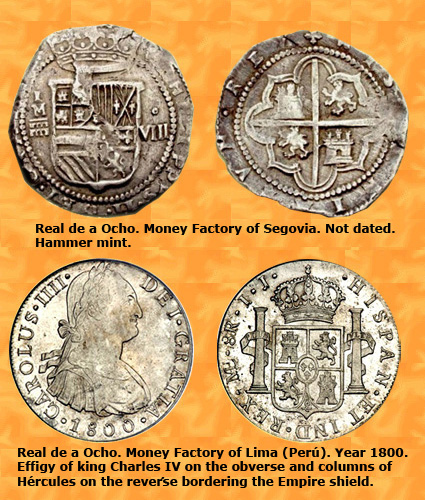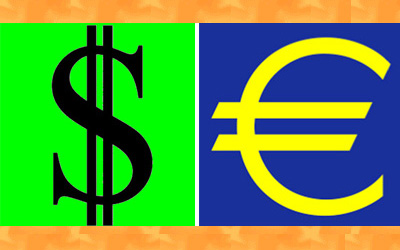THE SPANISH DOLLAR.
THE UNIVERSAL CURRENCY.![]()
![]()
![]()

The sixteenth
century was one of the most important times, not only for Spain but for
the rest of the world. After the reign of the Catholic Kings, Isabella
and Fernando (1474-1516), the unified country entered a phase of
unprecedented territorial expansion that led to the creation of one of
the greatest known empires in world history. Shortly after Columbus,
sailing the Atlantic Ocean to the west, encountered the American
continent in 1492, and thanks to the explorations and conquests of Spain
and Portugal carried out during the following years, the world was
practically distributed among these two great powers. In addition, with
the union of Spain and Portugal in 1581 and expansion across America and
parts of Asia and Africa, the maximum splendor of the Spanish empire was
reached, occupying almost 15% of the earth's surface, leading to
dominate the world panorama for almost three centuries. In the rest of
Europe, most countries were still awakening from their winter lethargy
of the Middle Ages and, while some were consumed in continuous religious
clashes, others were engaged in piracy and pillage, with the Ottoman
Empire looming threatening the horizon.
Under this scenario, world trade increased significantly throughout the
new territories of the Spanish Empire, awakened the need to create a
strong and recognized currency that would be accepted by all countries
for all types of commercial transactions. This coin was the
Real de a Ocho,
introduced by the Holy Roman Emperor king of Spain, Charles I in 1537.
It turned out to be a currency that was never thought to be so important
but the fact is that, backed by its strength, it led world trade for
more than three centuries. Made of pure quality silver from the mines of
Mexico and Potosi in Peru (now Bolivia), it was a large coin with a
weight of 27,47 grams and a purity of 93%. The
Real de a Ocho, also
known as Spanish dollar in the Anglo-Saxon world, spread throughout
Europe and America and much of Asia and Africa reaching places as remote
as Australia and China.

